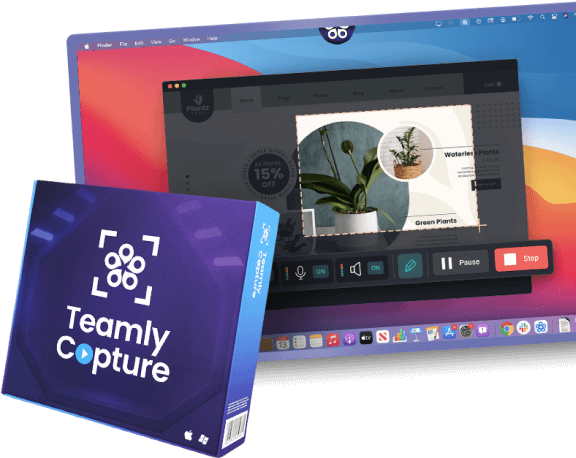
Click the button to start reading
How to Build an Inclusive Remote Working Community
The workplace watercooler was once the gathering point where people could take a breath and connect with another human being. Stories of children, pets, hobbies, and even love interests were shared loosely and with gusto.
Communities tend to happen naturally wherever people congregate, but what do we do when people are not physically gathering?
While people participated in the remote workforce long before the global pandemic, managing whole teams virtually has brought with it some challenges… but also some delightful perks. You don’t have to look far to see great examples of innovation and creativity bringing people together through a screen and microphone.
When it comes to building a truly inclusive remote working community, here are some of our best tips.
Set the Tone
Consider the fact that many people on your team are relatively new to remote work and may not understand the norms of virtual etiquette.
Simple things like changing your background to something silly, allowing your cat to sit on your lap, or starting off the meeting with a fun icebreaker is a great way to set the tone for what is acceptable, while also allowing people to feel comfortable in this virtual space.
Be clear on virtual expectations, write them down, and ensure that everyone understands them.
Do you start meetings with cameras on or off? Do you make use of the raise hand function? Do you encourage use of the platform’s chat function? Whatever your technical standards may be, ensure they are written down and communicated.
Aside from technical expectations, take a moment to acknowledge that people will be working in a number of physical spaces: a home office, the kitchen table, a local cafe, or a coworking space, just to name a few. Some people may even have tiny humans running around. Part of fostering an inclusive work environment is ensuring that people feel welcome and their contributions valued, however and wherever they contribute.

Hold Space for Vulnerability
We may all be in the same storm, but not everyone is in the same boat.
Understanding that people may be struggling with any number of things is the bare minimum. Follow up with this knowledge by creating a space where people feel comfortable being vulnerable and asking for help when they need it.
Leading by example is key, teams will be looking towards their higher ups for what is acceptable. When leadership authentically shares that they are struggling with something, it not only opens the doors for others to share, but also to offer help or guidance.
One creative way that companies are fostering these spaces is by designating certain chat channels to topics and support groups, like ones for parents or those who may be caring for elderly families. Informal water coolers or digital break rooms are also a helpful way to encourage less formal mingling.
It is difficult to be vulnerable with people you have yet to meet in person, but fostering a space where all are welcome and feel as though they are heard will go a long way.

Be Considerate of Others Time – Don’t Micromanage
Back in the day, you could walk by someone’s desk and note a pile of paperwork that needed to be dealt with or filed. You could see books open, full calendars on the wall, and meeting rooms occupied by busy bodies.
While there are still digital ways to see if someone is available like out of office automatic replies, blocked digital calendar slots, or even offline notifications, don’t make assumptions about other people’s time or how they are managing it. If work is being submitted on time, then you can trust that whatever system they have in place is sufficient. If the work isn’t being done on time, it may be appropriate to reevaluate expectations to ensure that they are reasonable.
Before the pandemic forced everyone online, it was a commonly held belief that people working from home worked less. Studies have found the very opposite to be true – people who work remotely tend to actually work more… it just may not be during traditional work hours or even in the same time zone.
If you want to be truly inclusive, you need to recognize that people have a variety of hours that they are most productive and mentally available. Whether someone works early in the morning or late at night, if a task is completed on time, there is no need to micromanage the details in between. Becoming outcome-oriented is beneficial to both leaders and their team and makes the best use of everyone’s time.
Offering a variety of ways that people can check in without having meetings is another considerate gesture. Even if your meetings are as short as 1 hour, if there are 10 people in attendance, you have pulled away 10 hours of potential productivity. Using collaborative technology, it is easy for your team to leave a note with the status of projects or pending to-dos.
You can offer a variety of ways to check in and submit reports without an hour long meeting.
Value Diversity and Inclusion
You don’t have to look very far to find piles of studies demonstrating the benefits of fostering a diverse work environment. A Boston Consulting Group (BCG) found that diversity was directly correlated to innovation which inturn resulted in an average of 19% more revenue for the companies that embraced it. The study also found that it wasn’t enough to simply have a diverse team, diversity needed to be present at all levels of the organization for the most benefit.
Different experiences shape a variety of perspectives. These perspectives then determine how we look at problems and the solutions that we find to solve them. In essence, everyone wins when inclusion is a priority.
It is important to understand that many people were forced into remote work based on situations beyond their control and they may be struggling. Taking extra care to check in with parents and minorities and other more vulnerable or underserved populations will go a long way to show that you see them and value their input.
With a little intentionality and consideration, you can foster an inclusive remote working community that your team is proud to be a part of.

















